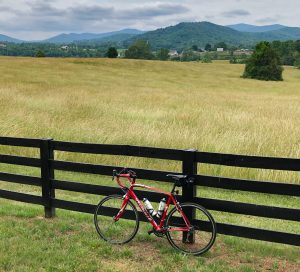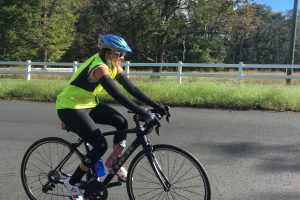Ride Classifications

Introduction
This guide is intended to help you select a ride that suits your style, cycling skills, and energy level. It will also help you choose a ride that is more likely to be attended by other cyclists who bike at a comparable pace, so you can enjoy all the great benefits of group riding. If you are unsure where to begin, start with a slower group, then work your way up as you get more comfortable. Constantly chasing a group that’s much faster than you can be frustrating, and entirely lacking in fun. We want you to have fun.
Note that these are guidelines, not hard and fast rules. The actual pace of any ride will depend on a variety of factors, including who shows up. However, riders are strongly encouraged to ride at the published speed.
Regrouping and Store Stops
Unless stated otherwise, CBC rides are considered “regroup often” rather than “no drop.” On these rides, cyclists are expected to maintain close to the published pace. Faster riders may move ahead, but will stop periodically at major intersections, turns, etc., to permit the remaining riders to catch up and regroup. On “no drop” rides, someone will ensure that no rider falls behind. “No drop” rides will be specifically noted in the ride calendar.
Many, but not all, rides will include a brief stop at a store where provisions can be purchased. Note that many stores do not have public bathrooms. All riders are expected to have the water and other supplies they may need to comfortably and safely complete the ride.
Rating Criteria
CBC rates all rides according to three criteria: Pace, Terrain, and Distance. Gravel rides also have their own classification.
Pace
Pace is an estimate of the final average speed achieved over the course of an entire ride on moderately hilly terrain (the average terrain found in this region). Averages may be slightly higher on flatter courses, lower on hillier routes. Actual riding speeds while on route will be slower uphill, faster on the flats, and much faster downhill.
Again, these are guidelines to get you oriented. Don’t worry about whether you are a “C” or a “CC.” Just get started!
| Rating | Average Speed (mph) | Description |
|---|---|---|
| S | <10 | Social – Talking, meeting new people, and riding with friends. Stops for coffee or refreshments common. |
| D | 10-12 | Easy – Typically shorter distances on easier grades, with frequent stops and regroupings. |
| C | 12-14 | Leisurely – Consistent over longer distances, comfortable in a group setting, more confident on roads with cars, some longer or steeper hills. |
| CC | 14-15 | Steady – Like C, but slightly faster and steadier over moderately hilly terrain. |
| B | 15-17 | Moderate – Pace begins to elevate here compared to slower classes. Faster speeds maintained over longer, steeper hills, less frequent regrouping. Occasional pacelines. |
| BB | 17-19 | Brisk – Experienced, fit cyclists. Pace will be aggressive and difficult to sustain at times. Frequent pacelines. |
| A/AA | 20+ | Strenuous – Very fast training rides, with repeated, intense uphill efforts. Long, sustained high-intensity pacelines. |
Terrain
Terrain indicates the most common or average terrain type of the ride and should be considered relative to the length and difficulty of the ride. CBC expresses this as an average elevation gain per mile. In choosing your ride, terrain can be a more important factor than distance. Short, hilly rides can feel harder than longer rides with less climbing. Very little terrain in the Charlottesville area is completely “flat,” so no rides are listed with that description.
| Rating | Climbing (ft/mile) | Description |
|---|---|---|
| MF | <50 | Mostly Flat — A few gentle uphill sections, or rolling terrain |
| MH | 50-70 | Moderately Hilly – A few short, steep hills, and longer moderate climbs |
| H | 70-90 | Hilly – Repeated, continuous climbs. Can be very steep or longer in duration. |
| VH | >90 | Very Hilly – Mountain passes, lots of long and steep climbs, ridge rides (eg, Skyline Drive, Blue Ridge Parkway). |
Distance
When more than one distance is offered on a ride, the options will be noted on the ride schedule. Note that many routes can be modified to add or cut miles. Check out the route library in CBC’s Ride With GPS Club Account for variations on routes.
Gravel
Gravel rides are generally more laid back than road rides and typically have more regrouping along the route. The pace generally varies between 10 and 13 mph, depending on the conditions of the gravel road, the percentage of gravel versus pavement on any given route, and the mix of riders. It is suggested that a gravel bike with at least 35mm tires are best for these rides, but some riders use mountain bikes or road bikes with at least 30-32mm tires with good tread.








